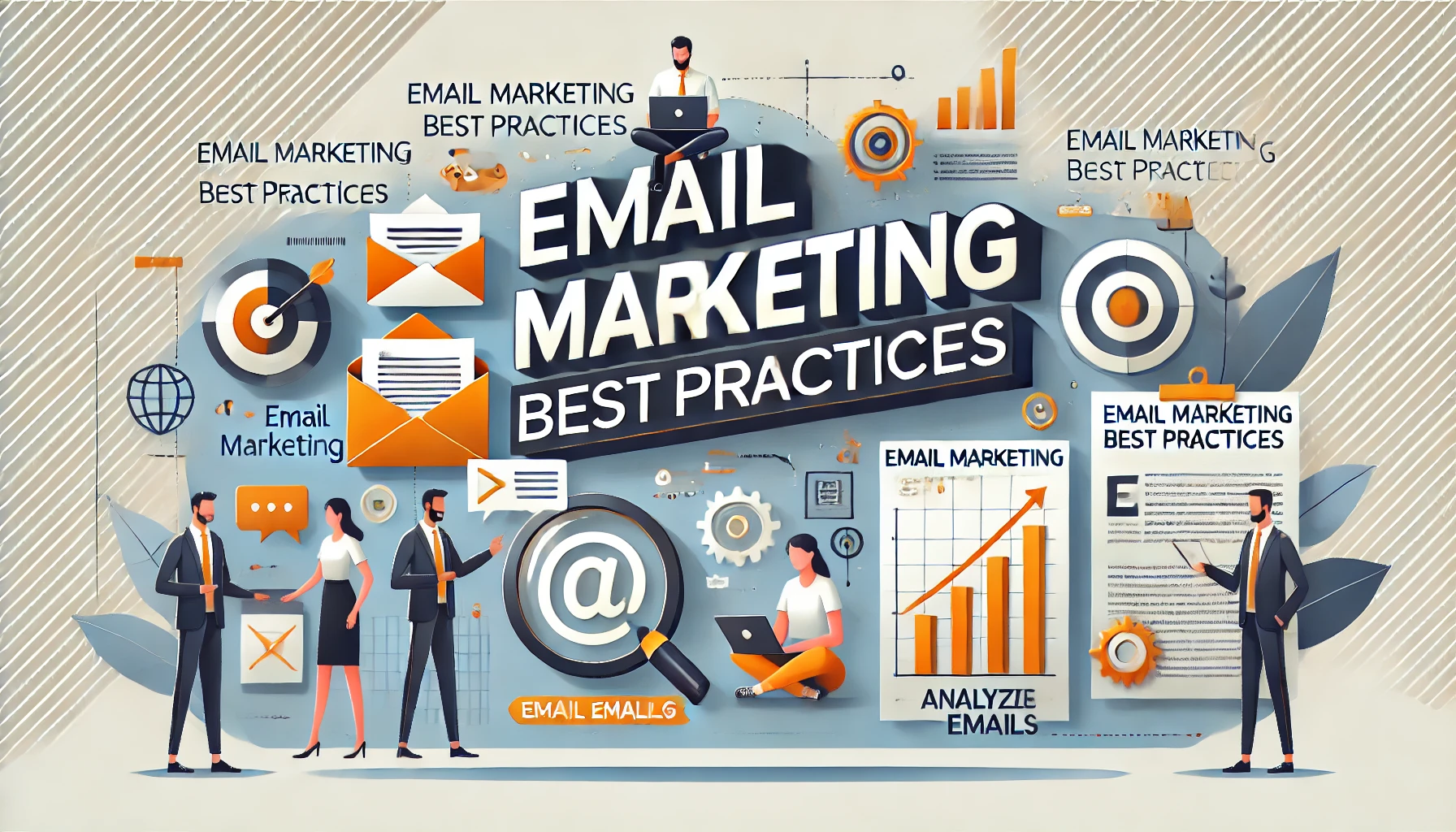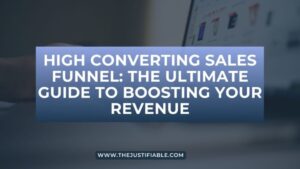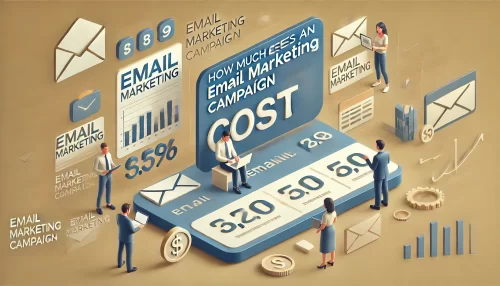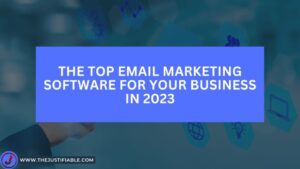Table of Contents
Are you struggling to convert leads through your email marketing campaigns? Do you want to learn actionable email marketing best practices that increase your open rates and drive more conversions?
This article will explore 10 essential strategies to enhance your email marketing success. Whether you’re just getting started or looking to improve your results, these tips will help you turn more leads into loyal customers.
1. Craft Engaging Subject Lines That Spark Curiosity
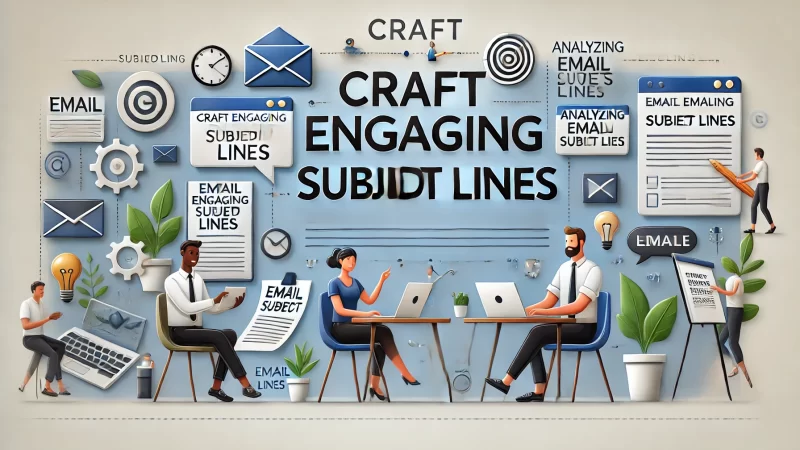
Subject lines play a pivotal role in the success of email campaigns. I believe that a captivating subject line is the key to grabbing attention and encouraging recipients to open your emails. By crafting intriguing and engaging subject lines, you can greatly improve your open rates and conversions.
Subject lines that evoke curiosity motivate people to take action. I suggest using emotional or persuasive words that resonate with your audience. When you spark curiosity in just a few words, recipients are more likely to click on your email to learn more, boosting your overall engagement.
Use Power Words In Subject Lines To Boost Open Rates
Incorporating power words into subject lines creates a sense of urgency and excitement. I find that words like “exclusive,” “limited time,” or “free” can dramatically increase open rates because they appeal to the recipient’s emotions. These powerful triggers prompt immediate action and curiosity.
When I talk about power words, I’m emphasizing their psychological impact. These words tap into our desires and needs, making us more likely to click. I suggest experimenting with different powerful phrases to see which resonates best with your audience and drives the most engagement.
Testing and analyzing power words can help identify which ones work best. I know it can take some trial and error, but once you’ve found a combination that boosts open rates, it can significantly enhance your email campaign’s success. Keep your audience’s preferences in mind to maintain relevance.
To maintain authenticity, I think it’s crucial to use power words in a way that fits naturally with your brand voice. Overusing them might reduce effectiveness, so strike a balance between enthusiasm and honesty. I’ve found that less is often more when it comes to power words.
It’s important to place power words strategically in the subject line. I suggest positioning them at the beginning or end, where they catch the reader’s eye more easily. This positioning ensures your message stands out in crowded inboxes and encourages the recipient to act.
Keep Subject Lines Short And To The Point
Short subject lines are easier to read and digest. I advise keeping them under 50 characters to ensure that the full message appears on both desktop and mobile devices. A concise subject line avoids overwhelming the reader, giving them a clear idea of what to expect.
When I talk about shortening subject lines, I emphasize clarity. A precise subject line immediately communicates the value of the email. I find that direct and focused subject lines often perform better because they reduce confusion and tell the reader exactly why they should click.
Keeping subject lines short doesn’t mean they should be bland. I suggest using compelling language, even within a limited word count, to make your emails stand out. I’ve noticed that the right combination of a few well-chosen words can have a significant impact on open rates.
I suggest prioritizing key information in your short subject lines. By putting the most important details upfront, you ensure that even if the line gets cut off on smaller screens, the core message still gets across. I’ve seen how this strategy increases clarity and reduces misinterpretation.
Subject lines should be optimized for scannability. I think it’s helpful to make them punchy and easy to skim so that recipients can quickly grasp the message. Emails with concise subject lines are more likely to be opened, especially when users are browsing through crowded inboxes.
A/B Test Different Subject Line Variations For Effectiveness
A/B testing allows you to determine which subject lines work best with your audience. I recommend testing different variations of subject lines, focusing on the impact of specific wording, length, or emotional appeal. This method provides valuable insights into recipient preferences.
By analyzing the results of A/B tests, you can refine your subject line strategy. I’ve found that some subject lines perform better in specific contexts or with certain audience segments. Testing gives you the flexibility to adjust your approach based on what resonates most with your subscribers.
I know that A/B testing is not a one-time process. To maximize the effectiveness of your subject lines, I suggest continually testing new variations. As audience behavior changes, keeping your approach fresh and responsive ensures your subject lines remain relevant and engaging.
Tracking metrics such as open rates and click-through rates helps you identify which subject lines drive the most engagement. I recommend making data-driven decisions based on these insights to enhance the overall performance of your email campaigns.
I suggest testing different subject line formats, such as questions versus statements or using emojis versus plain text. Experimenting with these elements can reveal valuable trends about what drives engagement for your specific audience.
2. Personalize Email Content For Stronger Connections
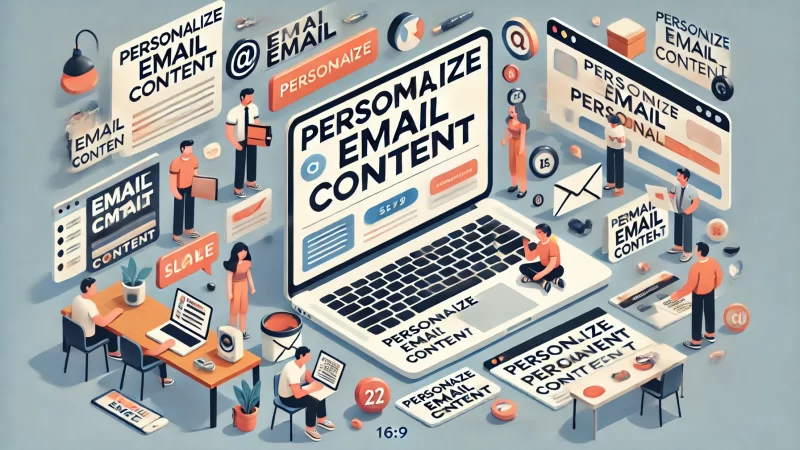
Personalized emails resonate more deeply with recipients, making them feel valued. I believe that personal touches, like using the recipient’s name or tailoring content to their preferences, create a stronger connection. Personalized emails are proven to increase both engagement and conversions.
When you tailor content based on user behavior or preferences, your email feels more relevant. I’ve seen firsthand how personalized emails significantly outperform generic ones. By speaking directly to the needs of your audience, you can foster loyalty and drive more meaningful interactions.
Include Recipient Names For A More Personal Touch
Including the recipient’s name in the email or subject line makes it feel more personal. I suggest using this tactic to grab attention and make the recipient feel recognized. Personalization creates a sense of familiarity, which I’ve seen improve open and response rates.
I believe that a personal approach helps build trust. By addressing recipients directly, you show that you value their individual relationship with your brand. I’ve noticed that emails with this level of personalization lead to stronger connections and higher engagement.
Customizing content beyond just the recipient’s name further enhances the impact of your emails. I suggest incorporating personalized recommendations based on past behavior or preferences. I’ve found that when emails reflect a recipient’s unique interests, they’re more likely to take action.
I advise keeping the personalization subtle to avoid seeming too intrusive. While using a recipient’s name can make an email feel more human, overdoing personalization can feel impersonal or automated. I recommend balancing familiarity with professionalism.
I’ve learned that personalization works best when it’s relevant. Make sure that the content being delivered matches the recipient’s preferences or behavior. When the message resonates, it strengthens the relationship between the recipient and your brand.
Leverage User Behavior Data To Send Relevant Offers
Using user behavior data allows you to tailor offers that appeal specifically to individual subscribers. I suggest analyzing purchase history, browsing patterns, or engagement data to craft targeted promotions that align with their interests, improving the likelihood of conversion.
By leveraging data, you can send highly relevant content that speaks directly to your audience’s needs. I find that emails aligned with user behavior, such as abandoned cart reminders or personalized product recommendations, often achieve higher engagement rates.
I recommend using dynamic content blocks that change based on user preferences. This technique allows you to deliver personalized offers to different segments within the same campaign. I’ve found this approach maximizes relevance while minimizing the need for multiple email versions.
Behavior-based triggers, such as sending an email when a user visits your website or adds items to their cart, are highly effective. I’ve experienced how timely emails can re-engage potential customers, making them more likely to return and complete their purchase.
User behavior insights can also inform your email frequency. I suggest sending more emails to highly engaged users while limiting contact with less active recipients. This targeted approach helps maintain engagement without overwhelming your audience.
Segment Your Audience Based On Interests And Needs
Segmentation ensures that your emails are more relevant and personalized to each audience group. I recommend dividing your subscribers into distinct groups based on interests, purchase behavior, or demographics. I’ve seen how this method increases email relevance and boosts conversion rates.
I believe that segmentation allows for more tailored communication. When I create segmented email lists, I find it easier to send targeted messages that resonate with each group’s specific needs. This tailored approach leads to higher engagement and greater satisfaction from recipients.
Segmentation also helps prevent unsubscribes by delivering content that subscribers actually want to see. I’ve found that by sending emails aligned with a user’s preferences, you reduce the risk of alienating or overwhelming them with irrelevant content.
I suggest using segmentation for special promotions or events. By creating different versions of your email for each audience group, you can make each recipient feel like the offer is custom-made for them. I’ve noticed this leads to higher engagement and conversion rates.
Analyzing your segmented campaigns allows you to refine future email strategies. I recommend continuously updating your segmentation criteria based on subscriber behavior and feedback. This adaptability ensures that your emails remain relevant and engaging as your audience evolves.
3. Optimize Email Design For Better User Experience
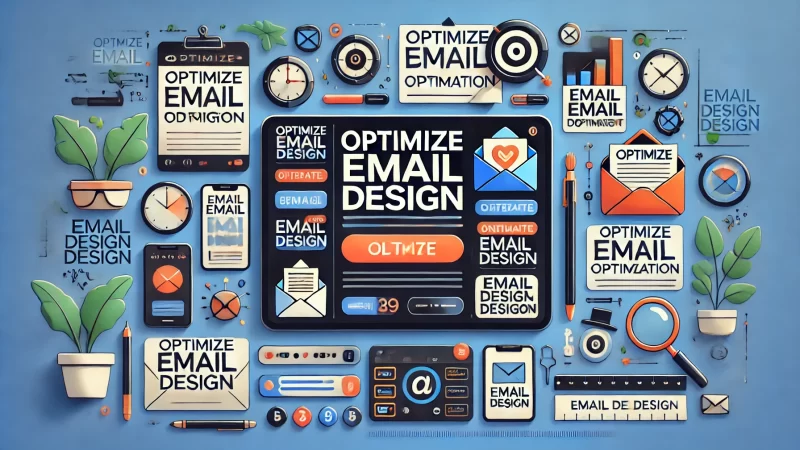
A well-designed email enhances user experience, encouraging recipients to engage more. I advise focusing on creating an intuitive and visually appealing layout that guides readers smoothly from one section to the next. This ensures that your content is easy to read and interact with.
Emails optimized for user experience increase engagement and retention. I believe simplifying the design and ensuring that it functions well across all devices improves both readability and click-through rates. Making the email visually appealing without overwhelming recipients is key to success.
Use Mobile-Friendly Templates To Reach A Wider Audience
Mobile-friendly templates are essential as most users check emails on their phones. I recommend ensuring that your email designs adapt to smaller screens, with responsive layouts and larger fonts for easy readability. This approach helps you reach more people and reduces bounce rates.
I’ve noticed that mobile-optimized emails drive more engagement because they load quickly and look great across all devices. With more people using smartphones for email, I advise testing your emails to ensure they’re visually appealing on both desktop and mobile screens.
Designing for mobile-first ensures that your message is easily digestible on smaller screens. I suggest simplifying your email layout, keeping key information at the top, and avoiding excessive text. This approach encourages readers to engage with your content without feeling overwhelmed.
I’ve learned that mobile-friendly emails need concise subject lines and preheaders. Since screen space is limited, I recommend getting straight to the point, making sure your readers know exactly what to expect, even before they open the email.
Call-to-action (CTA) buttons should also be optimized for mobile. I recommend making them large and tappable, ensuring that users can interact easily without zooming in or struggling to click. This small tweak can significantly improve conversion rates on mobile devices.
Limit The Use Of Large Images For Faster Load Times
Large images can slow down email loading times, frustrating recipients and leading to higher bounce rates. I suggest using compressed, high-quality images to maintain visual appeal while ensuring faster load times. This keeps users engaged and reduces the risk of them abandoning the email.
When images are too large, they take longer to load, especially on mobile devices. I’ve found that balancing the visual appeal of your email with fast load times creates a smoother experience for your audience. This helps retain their attention and increases the likelihood of interaction.
I recommend using fewer images or replacing some with text-based visuals. This reduces the overall file size of the email while maintaining its design elements. I’ve noticed that this strategy keeps the email visually attractive while improving performance across devices.
Incorporating alt text for images is essential for accessibility and SEO. I’ve learned that when images don’t load, either due to connection issues or email client settings, the alt text still communicates the image’s purpose, ensuring users aren’t left in the dark.
I also suggest using image placeholders as a fallback when images don’t load. This maintains the email’s structure and flow, giving your recipients a seamless experience regardless of their network conditions. It’s a small but effective way to optimize for better engagement.
Make Your Call-To-Action Buttons Stand Out Visually
A clear and visible call-to-action (CTA) button is crucial for driving conversions. I advise using bold colors and large, easy-to-click buttons to make the CTA stand out. This way, your readers can quickly identify where to click, increasing the chances of them taking action.
CTAs should be strategically placed to guide the reader’s journey through the email. I recommend positioning your primary CTA above the fold to grab attention immediately, with additional CTAs spread throughout the email to encourage further interaction.
I believe that contrast is key when designing CTA buttons. Make sure the button color contrasts with the email background to make it pop. I’ve noticed that strong visual contrast helps draw the reader’s eye to the action you want them to take.
Including compelling action words on your CTA buttons can improve click-through rates. I suggest using phrases like “Get Started Now” or “Claim Your Offer” to create a sense of urgency and excitement. These powerful words encourage immediate interaction and drive results.
I also recommend testing different CTA designs and placements to see what resonates with your audience. A/B testing can help you find the perfect combination that boosts conversions, ensuring your CTAs are as effective as possible in each campaign.
4. Write Compelling Copy That Drives Action
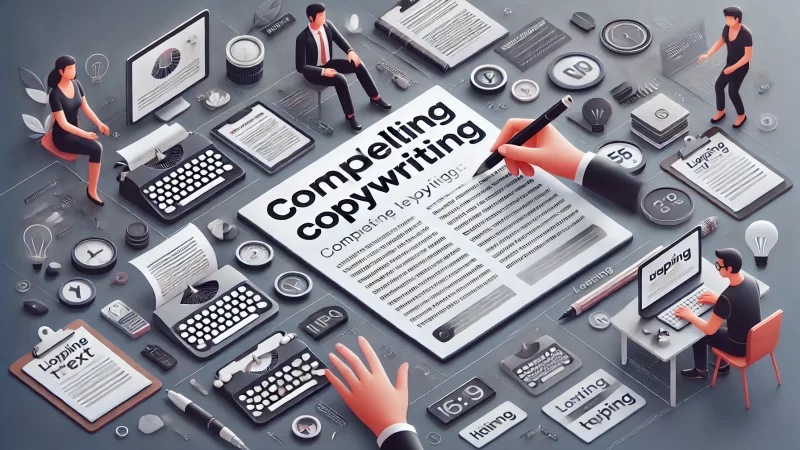
Strong email copy persuades readers to engage and take action. I think focusing on clear, concise messaging that highlights the value of your offer is essential. A well-written email can encourage clicks, sign-ups, or purchases by making it easy for readers to understand the benefits.
I advise writing copy that speaks directly to the reader’s needs. When you emphasize how your product or service solves their problems, they’re more likely to act. I’ve seen this approach consistently increase engagement and conversion rates across various campaigns.
Focus On Benefits Over Features To Capture Attention
When writing email copy, I recommend focusing on the benefits your product or service provides, rather than just listing features. Highlight how it improves the recipient’s life or solves a specific problem. This emotional appeal captures attention and motivates readers to take action.
I’ve found that readers connect more with how a product benefits them rather than its technical details. I suggest showing them what they’ll gain, such as time saved or peace of mind, which makes the offer more compelling and relevant to their needs.
People are more likely to act when they understand what’s in it for them. I recommend using phrases like “You’ll experience” or “You’ll benefit from” to put the focus on their personal gain. This subtle shift from features to benefits can drastically improve engagement.
I believe benefits-focused copy works because it speaks directly to the reader’s desires. When I highlight how a product will solve their problems or improve their life, they feel more emotionally connected to the offer, making them more likely to respond.
Concentrating on benefits also simplifies your message. Instead of overwhelming readers with technical jargon, I advise breaking down how your solution directly impacts them. This clarity keeps your emails concise and more effective at driving results.
Use Clear And Direct Language To Reduce Confusion
Clear, straightforward language ensures your email copy is easy to understand. I recommend avoiding complex terms or industry jargon that might confuse the reader. When your messaging is simple, I’ve found it’s easier for recipients to engage and respond to your call-to-action.
By being direct, you remove any barriers to understanding. I suggest using concise sentences that get to the point quickly, which keeps the reader’s attention focused. This approach increases the likelihood that they’ll continue reading and take the desired action.
Clarity in email copy also builds trust. When I use simple language that speaks to the reader in a conversational tone, they’re more likely to feel comfortable and confident in the message. This trust can lead to higher engagement and a stronger connection with your brand.
I advise breaking up long paragraphs into shorter sections for better readability. By making your content easier to scan, you help readers absorb the key points more quickly. This structure keeps the email from feeling overwhelming and encourages action.
Using bullet points or bolding key phrases can also enhance clarity. I’ve learned that emphasizing important information this way ensures the most crucial details stand out, helping readers understand the message more effectively and driving them toward your CTA.
Incorporate Urgency Words To Encourage Immediate Action
Urgency can be a powerful motivator in email marketing. I suggest incorporating urgency words like “Limited Time” or “Act Now” in your copy to create a sense of urgency that drives immediate action. This tactic taps into the reader’s fear of missing out, boosting conversion rates.
Urgency encourages readers to act quickly. I’ve found that when people believe they might miss out on an opportunity, they’re more likely to click through and make a purchase. I recommend using time-sensitive phrases to heighten this effect and drive faster decisions.
I also believe that urgency words work best when paired with a clear deadline. Phrases like “Offer Ends Soon” or “Only A Few Left” provide a tangible reason for the reader to act immediately. This approach makes the offer feel exclusive and time-sensitive, pushing recipients to engage.
To maintain credibility, I suggest being honest about the urgency. I’ve seen that readers appreciate transparency, so ensure that any time-limited offers or deadlines are genuine. This builds trust while still encouraging swift action, leading to better long-term results.
I advise testing different urgency phrases to see which ones resonate most with your audience. Some readers respond better to words like “Exclusive” or “Today Only,” while others may be motivated by countdowns or deadlines. Experimenting with these variations can help you find the best fit.
5. Test Email Send Times To Reach Your Audience
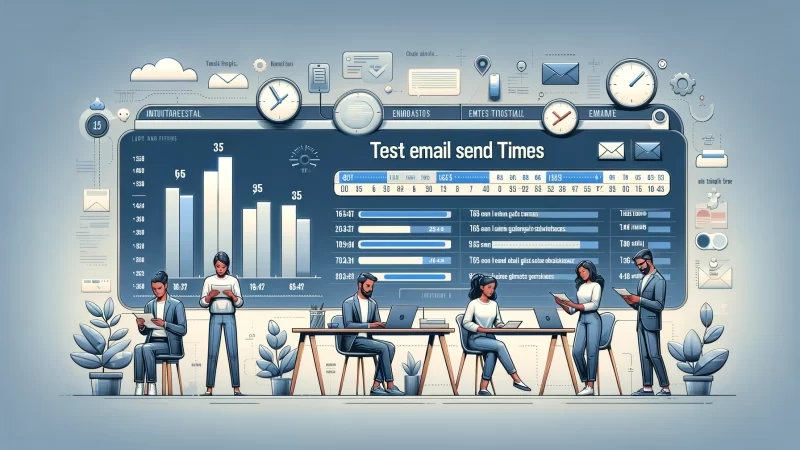
Understanding the best time to send emails can significantly impact engagement. I recommend analyzing your audience’s behavior to determine when they’re most active. Sending emails at the right time can increase open rates, boosting your chances of connecting with potential leads.
Sending emails at optimal times also helps avoid getting lost in the clutter. I’ve noticed that testing various send times ensures your emails land in the inbox when recipients are most likely to see them. This small adjustment can make a huge difference in engagement.
Analyze Your Target Audience’s Behavior Patterns
Knowing your audience’s habits is key to optimizing send times. I suggest examining when your subscribers open their emails or visit your website. By tracking these behavior patterns, you can pinpoint the times when they are most likely to engage with your content.
I’ve found that segmenting your audience based on activity can help fine-tune your approach. Different groups may be active at different times, so I recommend tailoring your send times to match their preferences. This ensures you connect with your audience when they’re most engaged.
Reviewing metrics like open rates and click-through rates can offer valuable insights into your audience’s habits. I believe that consistent monitoring and adjusting based on these metrics will help refine your email marketing strategy, ensuring that each message reaches your subscribers at the ideal moment.
Your audience’s time zones matter, too. I suggest taking geographic location into account when deciding on send times. Sending emails at the wrong time of day could result in missed opportunities, so it’s important to align your timing with where your audience is located.
I advise using tools that analyze your audience’s engagement patterns over time. These tools can highlight trends and recommend the best times for sending emails, streamlining the process and making it easier to improve your email marketing performance.
Experiment With Different Send Times To Maximize Engagement
To find the best send time, I recommend experimenting with different time slots. I’ve learned that A/B testing can reveal valuable insights, as different audiences respond differently to various times of the day. This method allows you to maximize engagement by targeting peak times.
When experimenting, it’s important to test both weekdays and weekends. I’ve noticed that some audiences are more active on weekends, while others prefer weekday mornings or afternoons. Testing multiple days and times helps determine when your subscribers are most likely to open your emails.
It’s not enough to experiment once—I believe regular testing is essential. Audience behavior can change over time, so I suggest revisiting your email send times every few months to ensure they remain effective. This ongoing optimization keeps your campaigns fresh and relevant.
Incorporating time-based testing into your overall strategy can significantly improve results. I find that by using this approach, you can better align your email content with your audience’s daily habits, leading to higher engagement and conversion rates.
I recommend analyzing the results of each test carefully. Tracking open rates and click-through rates helps identify which times yield the best performance, allowing you to refine your approach and consistently hit your audience at their most engaged moments.
Avoid Overloading Your Audience With Frequent Emails
Sending too many emails can overwhelm your audience, causing them to disengage. I suggest pacing your email frequency to ensure that you stay relevant without being annoying. This balance helps maintain a positive relationship with your subscribers, reducing the risk of unsubscribes.
I’ve seen firsthand how overloading an inbox can lead to email fatigue. I recommend limiting the number of emails you send each week to avoid overwhelming your recipients. This keeps your emails fresh and ensures they are something your audience looks forward to, not dreads.
Focusing on quality over quantity is key. I advise sending fewer, more meaningful emails rather than bombarding your audience with constant messages. Each email should provide real value, whether it’s helpful content, a special offer, or important updates.
I believe monitoring engagement metrics like unsubscribe rates and open rates can reveal if you’re sending too many emails. If you notice a drop in engagement, it may be time to scale back and focus on delivering more targeted, relevant messages.
To maintain interest without overwhelming your subscribers, I suggest experimenting with dynamic content that adapts to each recipient’s behavior. This approach allows you to send personalized messages without increasing the overall volume of your emails.
6. Leverage Automated Workflows To Nurture Leads

Automated email workflows can streamline your marketing efforts and nurture leads effectively. I recommend setting up a series of automated emails to engage with subscribers at different stages of their journey. This ensures your messages are timely, relevant, and tailored to their needs.
Using automation allows you to build relationships with leads without needing constant manual input. I believe that leveraging workflows not only saves time but also ensures consistent communication with your audience, increasing the likelihood of turning leads into loyal customers.
Set Up Welcome Email Series To Engage New Subscribers
Welcome emails make a strong first impression. I suggest setting up an automated welcome series to introduce your brand, share valuable resources, and guide new subscribers on what to expect. This series helps establish trust and sets the tone for future interactions.
I find that a well-crafted welcome series can engage new subscribers more effectively than a single email. By sending a series of emails over several days or weeks, you can gradually build rapport and showcase the value of your brand, encouraging deeper connections with your audience.
Each email in your welcome series should have a clear focus. I recommend starting with an introduction, then following up with valuable content or offers. This way, new subscribers receive a steady flow of useful information, keeping them engaged and interested in your emails.
I believe a personalized welcome series makes subscribers feel valued. Including their name or referring to their specific interests creates a sense of connection, making them more likely to open and engage with your future emails.
Monitoring the performance of your welcome series is important. I suggest tracking open rates and click-through rates for each email to identify what resonates most with your new subscribers. This allows you to refine the series and ensure maximum engagement.
Use Drip Campaigns To Educate Prospects Over Time
Drip campaigns deliver a series of educational emails over time, helping nurture leads gradually. I recommend using this strategy to guide prospects through their buyer’s journey by providing relevant, helpful content at each stage, from awareness to decision-making.
I’ve found that drip campaigns work well because they keep your brand top of mind without overwhelming your audience. Each email in the series should build on the previous one, offering progressively deeper insights and value to maintain interest and guide prospects toward a decision.
Each email in a drip campaign should have a clear goal. I suggest aligning each message with a specific stage in the buyer’s journey, whether it’s raising awareness, answering questions, or addressing pain points. This focused approach ensures that your content remains relevant and helpful.
I recommend automating drip campaigns to send emails at regular intervals based on subscriber actions. For example, if a prospect downloads a resource, the next email could offer related content. This ensures your emails are timely and personalized, driving better engagement.
To optimize your drip campaigns, I believe it’s important to regularly review performance metrics. Tracking open rates, click-through rates, and conversions helps you identify which emails are working and where improvements are needed to enhance overall effectiveness.
Trigger Abandoned Cart Emails To Recover Lost Sales
Abandoned cart emails are a powerful tool for recovering lost sales. I advise setting up automated triggers that send reminders to customers who leave items in their carts without completing the purchase. These timely nudges can encourage them to return and finish the transaction.
I’ve seen how effective abandoned cart emails can be when personalized. Including a reminder of the items left in the cart, along with a strong call-to-action, helps remind customers of their interest and gives them a reason to come back and complete their purchase.
Offering incentives, like discounts or free shipping, can increase the likelihood of recovering abandoned carts. I suggest including these offers in your reminder emails to make the decision easier for your customers, giving them an extra push to follow through with their purchase.
Timing is crucial for abandoned cart emails. I recommend sending the first reminder shortly after the cart is abandoned, followed by a second and third email if necessary. These gentle reminders help keep the potential purchase top of mind without being overly aggressive.
Analyzing the performance of your abandoned cart emails can reveal opportunities for improvement. I suggest tracking how many carts are recovered and using A/B testing to refine your messaging, timing, and incentives for the best results.
7. Monitor Key Metrics To Refine Your Strategy
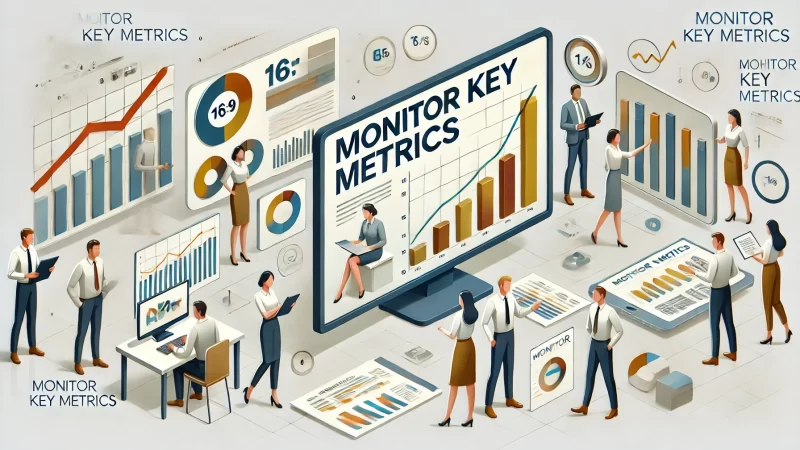
Tracking key metrics helps you understand how your email campaigns are performing. I believe focusing on data like open rates, click-through rates, and conversions allows you to identify what’s working and what needs improvement. This helps in optimizing your email marketing efforts.
Refining your strategy based on metrics ensures continuous improvement. I recommend regularly analyzing these performance indicators, as they provide valuable insights into your audience’s behavior. This data-driven approach allows you to adjust and improve future campaigns effectively.
Track Open Rates, Click-Through Rates, And Conversions
Open rates measure how many recipients are actually opening your emails. I find that tracking this metric gives a clear indication of how well your subject lines and sender names are performing. A low open rate might signal the need to test different approaches.
Click-through rates (CTR) reflect the effectiveness of your email content and calls-to-action. I suggest paying close attention to this metric, as it shows how engaging and compelling your email copy is. A strong CTR means your content resonates with your audience.
Conversions are the ultimate measure of success. Tracking how many recipients take the desired action, whether it’s making a purchase or signing up for an event, helps you assess the true impact of your emails. I recommend focusing on this to gauge your ROI.
To improve these metrics, I advise experimenting with different strategies. A/B testing subject lines, CTAs, and email content can provide valuable insights into what resonates best with your audience. Over time, you’ll be able to fine-tune your approach for better results.
Analyzing trends over time is crucial. I recommend comparing performance across campaigns to identify patterns and opportunities for improvement. By doing so, you can continuously optimize your email strategy, ensuring better engagement and higher conversion rates.
Adjust Email Frequency Based On Engagement Metrics
Email frequency plays a crucial role in maintaining audience interest. I suggest adjusting how often you send emails based on engagement metrics like open rates and click-through rates. If engagement drops, it may be time to reduce the number of emails sent.
I’ve noticed that sending too many emails can overwhelm recipients, leading to unsubscribes. I recommend pacing your emails to avoid fatigue. On the other hand, sending too few emails can cause your brand to be forgotten, so finding the right balance is key.
Monitoring engagement levels is vital to determining the ideal email frequency. I believe that tracking how your audience responds to different send intervals helps maintain relevance without becoming overwhelming. This can significantly improve overall campaign performance.
Testing different email frequencies is another effective strategy. I suggest experimenting with weekly, bi-weekly, or monthly emails to see which schedule generates the highest engagement. Once you’ve identified the right frequency, stick to it for consistency.
Engagement metrics will help you gauge how well your email frequency strategy is working. I recommend reviewing these metrics regularly to ensure your emails remain relevant and are sent at optimal intervals, improving overall recipient satisfaction and interaction.
Use Heatmaps To Understand Where Readers Are Clicking
Heatmaps offer a visual representation of how recipients interact with your emails. I suggest using this tool to see where readers are clicking the most, which helps you optimize content placement. This insight allows you to focus on high-interest areas, improving engagement.
I’ve found that heatmaps can reveal unexpected user behavior. You may notice clicks on links that aren’t your main CTA or areas where users seem to lose interest. I recommend using this information to refine your email layout and prioritize key actions.
Heatmaps can also show if your CTAs are in the right spot. I suggest moving important links or buttons to areas with high engagement based on heatmap data. This small adjustment can lead to higher click-through rates and better overall performance.
Understanding how users scroll through your emails is another advantage of heatmaps. I recommend analyzing this data to ensure that important information is placed where it’s most likely to be seen. If users aren’t scrolling far, consider moving critical content higher up.
Using heatmaps consistently will help you improve over time. I believe regularly analyzing these visual insights ensures that your emails remain effective, leading to higher engagement and more conversions. It’s a powerful way to optimize your email marketing strategy.
8. Build Trust With Consistent Branding And Messaging
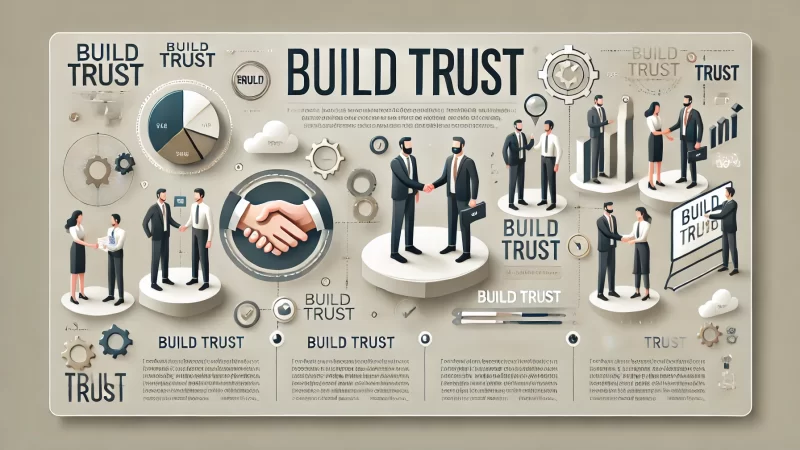
Consistency in branding and messaging builds trust with your audience. I recommend using the same tone, voice, and visual elements across all emails to create a cohesive experience. This consistency helps your brand become more recognizable and reliable to recipients.
A strong, consistent brand presence fosters long-term relationships with your audience. I’ve learned that when emails consistently reflect your brand’s values and personality, they resonate more with recipients. This connection can lead to increased loyalty and engagement.
Use A Recognizable Sender Name To Increase Credibility
A recognizable sender name immediately establishes trust with your recipients. I suggest using your brand name or a familiar name associated with your company to ensure that recipients know who the email is from. This helps reduce the chances of your email being marked as spam.
I’ve noticed that sender names play a critical role in whether or not emails are opened. If the recipient doesn’t recognize who the email is from, they’re less likely to engage. I advise avoiding generic or vague sender names, which can cause confusion or distrust.
Using a personalized sender name, such as a team member’s name along with the brand, can also boost credibility. I recommend this approach as it adds a human touch, making the email feel more personal. Recipients often respond better to emails that feel tailored to them.
Consistency is key when it comes to sender names. I advise sticking with one recognizable name or format so that your audience becomes familiar with it over time. This familiarity builds trust, increasing the likelihood that your emails will be opened.
I believe that monitoring open rates can reveal how well your sender name strategy is working. If open rates are low, it might be worth experimenting with different names to see if that increases engagement. A trusted sender name is crucial for successful email marketing.
Maintain A Consistent Tone And Voice Across Emails
A consistent tone and voice help create a strong brand identity. I suggest using the same style in all of your emails, whether formal, casual, or friendly, to ensure that your audience always knows what to expect. This builds familiarity and strengthens your brand’s connection with them.
I’ve found that maintaining a consistent voice creates a sense of reliability. When your emails sound the same across campaigns, recipients feel like they’re interacting with a brand they can trust. This consistency reinforces your identity and fosters long-term loyalty.
Using the right tone also ensures your messages resonate with your audience. I recommend choosing a voice that reflects your brand’s personality and values, then applying it consistently. Whether you’re funny, serious, or professional, staying true to that voice builds credibility.
Consistency in tone doesn’t mean being monotonous. I believe you can still inject variety into your emails by adjusting your message for different campaigns, while keeping the overall voice intact. This keeps your emails fresh while maintaining brand recognition.
I advise regularly reviewing your email copy to ensure it aligns with your brand’s voice. Consistent tone and messaging can elevate your email campaigns, making them more engaging and trustworthy. Over time, this consistency will strengthen your relationship with your audience.
Include Social Proof Like Reviews Or Testimonials In Emails
Including social proof in your emails builds trust and encourages conversions. I suggest featuring customer reviews, testimonials, or case studies to demonstrate your brand’s reliability. When recipients see that others have had positive experiences, they’re more likely to engage.
I’ve noticed that social proof provides reassurance to recipients, especially when making purchasing decisions. By showcasing positive feedback from real customers, you can reduce doubts and increase confidence in your product or service. This is a powerful motivator for action.
Incorporating social proof also adds credibility to your offers. I recommend placing testimonials or reviews near your calls-to-action to give recipients that final push they need to convert. Seeing others’ success stories can influence their decision-making process.
I suggest using a variety of social proof, such as product reviews, customer testimonials, or influencer endorsements. This diversity keeps your emails interesting and provides multiple forms of validation for your brand, making it more appealing to a wider audience.
To maximize the impact of social proof, I recommend including real names and photos when possible. Personalizing these testimonials adds authenticity, making the feedback more relatable and trustworthy. This strategy can significantly boost engagement and conversions.
9. Comply With Email Marketing Laws And Guidelines
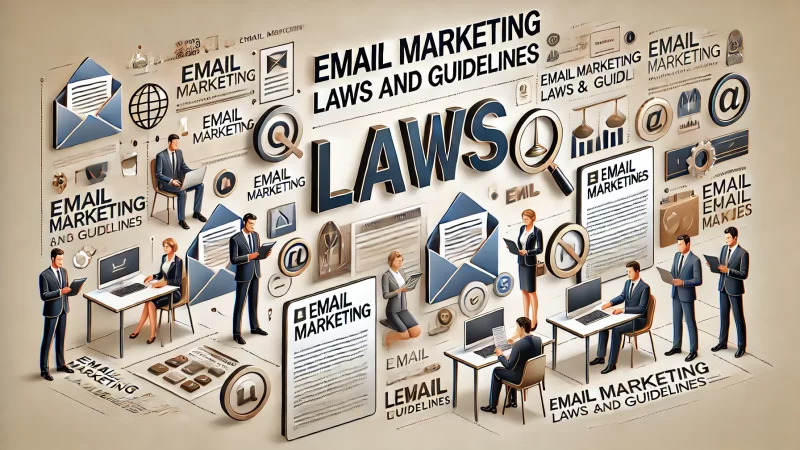
Complying with email marketing laws is essential to maintain trust and avoid penalties. I recommend following key regulations like GDPR and CAN-SPAM to ensure your campaigns are transparent and legally sound. This approach helps protect your brand’s reputation and fosters long-term loyalty.
Failure to comply with these guidelines can result in fines and damage to your credibility. I believe that respecting recipients’ privacy and preferences is not only a legal requirement but also a best practice for maintaining positive relationships with your audience.
Make It Easy For Recipients To Unsubscribe If Needed
An easy-to-find unsubscribe option is crucial for maintaining compliance. I suggest including a clear, visible unsubscribe link in every email. This helps you avoid frustrating recipients who no longer wish to receive your content and ensures you stay within legal guidelines.
I believe offering a simple, one-click unsubscribe process builds trust with your audience. If users feel trapped in a mailing list, it can damage your reputation. By making it easy for them to leave, you maintain transparency and show that you respect their preferences.
I’ve found that including a short message explaining what the recipient will miss can reduce unsubscribes. You might say, “We’re sorry to see you go!” before the link to remind them of the benefits of staying subscribed. This personal touch can make a difference.
To avoid confusion, I suggest placing the unsubscribe link in a prominent location, like the footer of your email. Ensuring it’s easy to locate not only keeps you compliant with laws like CAN-SPAM but also demonstrates your commitment to a user-friendly experience.
If a recipient does decide to unsubscribe, I believe it’s important to acknowledge their choice with a confirmation email. This confirms their request has been processed and provides an opportunity to gather feedback on why they unsubscribed, which can be valuable for refining future campaigns.
Follow GDPR And CAN-SPAM Guidelines For Transparency
Complying with GDPR and CAN-SPAM is critical for building trust. I advise ensuring that your emails meet these legal requirements by including clear opt-in processes and transparent privacy policies. This way, your audience knows exactly what they’re signing up for.
I recommend using double opt-ins to confirm a subscriber’s consent. This practice aligns with GDPR guidelines and helps prevent any misunderstandings about how their information will be used. It’s a great way to maintain transparency and avoid potential legal issues.
Transparency is key, so I suggest clearly explaining how you’ll use the recipient’s data when they sign up. I’ve found that including a short statement about data usage in your sign-up forms reassures subscribers that their information will be handled responsibly.
To stay compliant with CAN-SPAM, I suggest including a physical mailing address in your emails. This requirement adds legitimacy and ensures your communications meet legal standards, helping avoid fines or being flagged as spam.
I believe offering an easy way for subscribers to manage their preferences also keeps you GDPR compliant. Providing options to customize what type of content they receive shows that you respect their privacy, which builds trust and reduces the likelihood of unsubscribes.
Ensure Emails Provide Clear Contact Information
Including clear contact information in your emails helps establish trust and credibility. I recommend listing your company’s physical address, phone number, and support email to make it easy for recipients to get in touch with you if they have questions or concerns.
I’ve noticed that when recipients can easily contact you, it reassures them that your business is legitimate and approachable. This open communication fosters trust and can lead to more engagement and fewer complaints about your emails.
Providing clear contact information is not only a legal requirement under CAN-SPAM but also a best practice for customer service. I suggest placing your contact details in the footer of your emails to ensure they’re easily accessible without cluttering the main content.
If your emails represent a large company, I recommend including a link to your customer support page or FAQ section. This gives recipients quick access to common answers and shows you’re committed to helping them with any issues that arise.
In addition to basic contact details, I suggest offering a direct way for recipients to reply to your emails. I’ve seen that when subscribers feel they can reach out with questions or feedback, it strengthens their relationship with your brand, enhancing overall engagement.
10. Regularly Clean Your Email List To Improve Deliverability
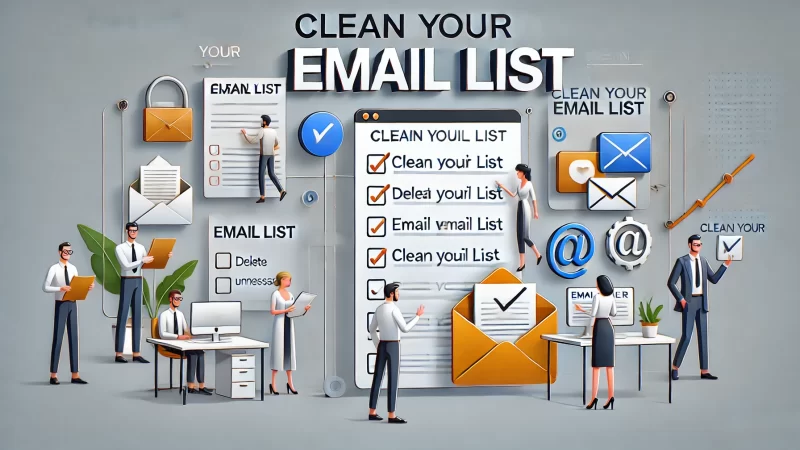
Cleaning your email list is essential for maintaining high deliverability rates. I advise regularly removing inactive subscribers and invalid addresses to reduce bounce rates and ensure your messages reach engaged recipients. This practice helps keep your email list healthy and effective.
A clean list also boosts your open rates and engagement. I’ve noticed that when you focus on sending emails to active subscribers, your content becomes more relevant, and your email marketing strategy becomes more efficient. It’s a small effort with big rewards.
Remove Inactive Subscribers To Increase Open Rates
Inactive subscribers can hurt your engagement metrics. I suggest removing those who haven’t opened or interacted with your emails in a long time. This helps boost your open rates and ensures that your emails are reaching people who are genuinely interested in your content.
Before removing them, I believe it’s a good idea to send a re-engagement email. I’ve found that sometimes a simple reminder or a special offer can reignite interest. If they still don’t engage, it’s time to take them off the list to maintain a focused, active audience.
I recommend setting up an automated system to track inactivity and manage removals. This way, you don’t have to manually review your list, and you can ensure that inactive subscribers are periodically filtered out, improving the overall performance of your campaigns.
In my experience, removing inactive subscribers not only improves open rates but also enhances your sender reputation. Email service providers like Gmail or Outlook notice high engagement rates, which can help ensure that your emails land in the inbox instead of the spam folder.
I suggest reviewing your list every 3 to 6 months. Regular maintenance keeps your email campaigns relevant, reduces bounce rates, and helps you focus on the most engaged subscribers, leading to better overall campaign performance.
Validate Email Addresses To Reduce Bounce Rates
Validating email addresses is a crucial step in maintaining a clean list. I suggest using email verification tools to identify and remove invalid addresses before sending campaigns. This practice helps reduce bounce rates, ensuring your emails reach real and active inboxes.
I’ve found that email bounces not only waste your resources but can also damage your sender reputation. By validating addresses before adding them to your list, you can significantly improve deliverability and avoid potential penalties from email service providers.
Using double opt-ins is another effective method for validating addresses. I recommend requiring subscribers to confirm their email after signing up. This ensures that the address is accurate and reduces the likelihood of invalid contacts cluttering your list.
I advise regularly checking for typos or fake email addresses that slip through. Automated tools can help catch these issues, but manually reviewing your list from time to time ensures a higher quality of data and improves the overall performance of your email marketing efforts.
Maintaining a validated list not only reduces bounce rates but also increases engagement. I’ve noticed that when you focus on sending to verified, active addresses, your email marketing becomes more efficient, with fewer wasted sends and higher conversion rates.
Segment Lists To Target Engaged Subscribers More Effectively
Segmenting your list allows you to target the most engaged subscribers with tailored content. I suggest dividing your list based on subscriber behavior, such as open rates or click-through activity, to ensure your messages are relevant and personalized for each group.
I’ve found that segmentation leads to higher engagement because it allows you to send more personalized content. For example, you can create segments for loyal customers, new subscribers, or users who have recently made a purchase. This targeted approach improves relevance.
Segmenting also helps you avoid sending generic emails. I recommend using subscriber data, such as demographics or purchase history, to create specific segments that align with your business goals. When content feels tailored, subscribers are more likely to engage with it.
I believe segmentation is key to avoiding email fatigue. By sending targeted emails to the right groups, you reduce the chance of overwhelming your subscribers with irrelevant content. This ensures that each email feels fresh and valuable, leading to better overall engagement.
Using segmentation, I suggest testing different content types for each group to see what resonates best. Some may prefer promotional offers, while others engage more with educational content. Tailoring your approach for each segment leads to higher open rates and conversions.


